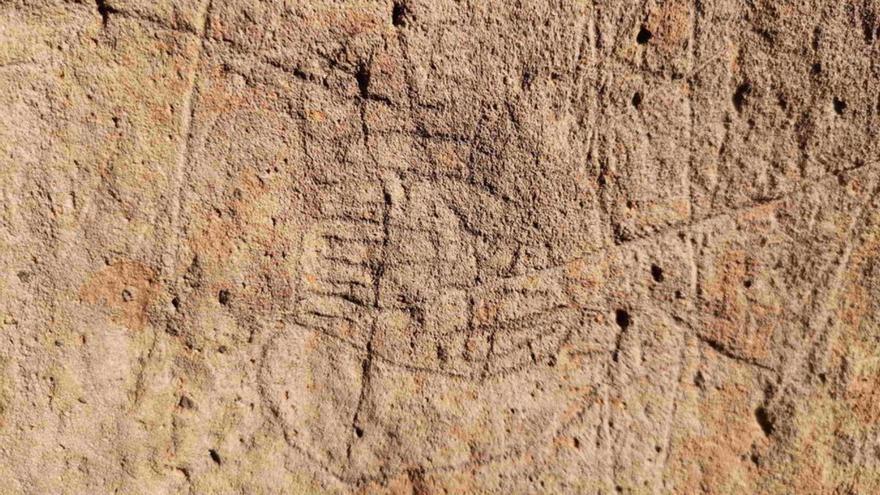
The station of rock engravings on a rocky outcrop located on the right bank of the Barranco del Muerto, on the dividing line with the municipality of La Laguna, 100 meters south of the TF-1 highway, is made up of a chronological ascription that It starts from the prehistoric period until dates after the conquest of the Island. It consists of about thirty panels with cave inscriptions, executed using thick and fine incision techniques, few examples of picketing, with or without abrasion, and a station for bowls and channels inside a natural cavity.
Its theme is classified into geometric motifs, which include quadrangular, cruciform, ovaloid, reticular, ovaloid, triangular and rectilinear shapes; figurative motifs, representing ships with hull and sail details; and graffiti with modern inscriptions, made by plundering visitors. The first sector is located on the right bank of the Barranco del Muerto, on a rocky outcrop of basaltic nature that is part of the interfluve of the aforementioned channel, covering an area of 2,600 square meters. The land where it is located, characterized by a tabaibal-cardonal, has been greatly transformed by the hand of man, due to the existence of terraces from the old agricultural farms, as well as the construction of the highway, rubble dumping, water pipes, etc. The lower sector of this area is made up of a rock engraving station supported by a small basaltic outcrop, integrated into Pleistocene flows of augitic-olivine petrological composition and subjected to a prismatic disjunction process that determines the existence of more or less flat in the stone blocks that make up the complex.
The upper sector is located in the middle course of the Barranco del Muerto, above the aforementioned highway, near the El Draguillo neighborhood, where the same geological formation has been undermined, showing a certain degree of engagement, with vertical walls of 10-15 m high, in which columnar disjunction processes have led to numerous landslides, whose debris forms authentic slopes at the base of the escarpments. This area is highly degraded due to the dumping of debris and rubbish. On the right bank of the channel of the ravine a hole opens, the result of the action of differential erosion processes on highly erodible tuffaceous materials. On the floor, four large bowls and two smaller ones are documented, connected by channels. One of the bowls has a concentric outer border, which generates a lowered surface in the center of which the hole is located.
On this same side of the aforementioned ravine, a few meters to the north, there is a large natural cave (6.70 meters long by 13 wide and 2.40 meters high) with diverticula that in the pre-Hispanic period must have been used for housing, since on the surface the existence of obsidian ceramic is detected. Inside there are remains of a wall that separates the interior of the cave from an adjacent covacha, which also presents stratigraphic filling. The intense reuse that this cave has undergone over the years has meant that the conservation conditions prevent a global assessment of the parts and that its archaeological potential can be used with a perspective of scientific or patrimonial use.
At the foot of the small waterfall that exists upstream of the ravine, a large hole was configured that allowed the accumulation of water for a long period of time, we consider that in aboriginal times it must have been an essential element in the group’s water supply settled in this ravine.
In May 2021, the Cabildo de Tenerife inaugurated the Barranco del Muerto Interpretation Center at the IES San Matías, located in its surroundings. The management, teachers and students of the IES San Matías, the staff of the Historical Heritage technical service and the La Montaña, San Jerónimo and Ibergara neighborhood associations collaborated in its assembly.
Through new technologies, panels and models, we will be able to take a virtual tour of the space where the rock engravings found from the pre-Hispanic period are located, knowing their archaeological, ethnographic and environmental values.















